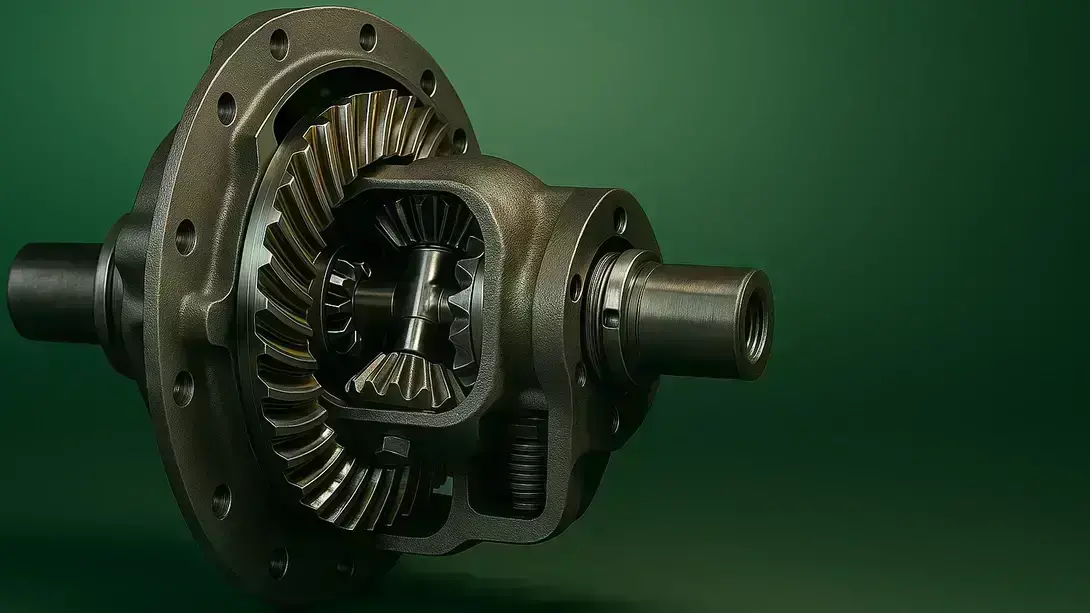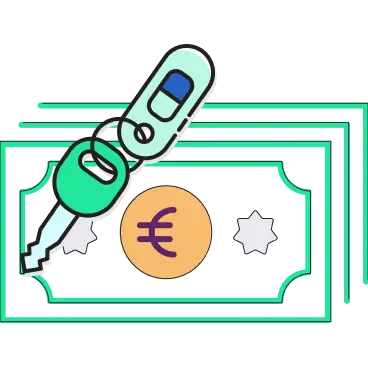Locking differential: How to use it correctly – in cars, four-wheel drive vehicles, and trucks
What the differential lock can do – and when it's better to leave it off
The differential lock helps in many cases. It distributes the power so that it's not just the spinning wheel that gets traction. It sounds simple, but it's a powerful tool – with clear rules for use. Here you can find out what a differential lock is, how it works, when to engage it, and what its disadvantages are.
What is a differential lock – and what is it used for?
The differential allows the wheels on one axle to turn at different speeds when cornering. The disadvantage is that on slippery surfaces, it tends to send power to the wheel with the least grip. This is where the differential lock (limited-slip differential) comes in: it reduces or prevents the difference in slip between the wheels. The result: more traction, less spinning.
Variants (brief overview):
- Manual 100% lock (mechanical/pneumatic, often in off-road/trucks): rigid connection – only for low speed/off-road.
- Multi-plate limited-slip differential (LSD): locks partially, depending on load/slip.
- Electronic lock/eDiff: brakes the spinning wheel (ESP/traction control), simulates locking effect.
- Center (central) and axle locks on all-wheel drive: lock power distribution between front/rear axle or right/left on the axle.
Engaging the differential lock: When is it useful?
Rule of thumb: Only when there is little grip, at low speeds, and driving as straight ahead as possible.
Typical scenarios:
- Snow, ice, mud, wet grass, sand, gravel
- Offset driveways / diagonally unloaded axles
- Starting with a trailer on slippery ground
- Trucks: maneuvering on construction sites, ramps, wet ground
Better to leave it off in:
- Dry roads with good grip (leads to tension in the drive train)
- Higher speeds
- Tight corners (massive understeer, tire rubbing)
Tip:
Many manufacturers recommend engaging the system when stationary or at very low speeds and disengaging it immediately once the critical section is over. If in doubt, check your vehicle's operating instructions.
Differential lock in curves: What do you need to watch out for?
When the lock is activated, the axle wants to turn at the same speed – which is physically impossible in a curve. The result:
- Understeer, longer braking distance, tire wear
- Noticeably higher steering torque (it “pulls”)
- Drive train tension (possible damage during continuous operation)
Practical advice:
If possible, drive straight through the slippery passage, gently accelerate, avoid sudden steering movements – and then disengage the lock.
Differential lock in all-wheel drive: Car vs. truck
- All-wheel drive car/SUV: Often central differential (distributed power) plus electronic cross locks via brake intervention. Some off-road vehicles offer genuine axle locks (front/rear).
- Trucks/vans: Often manual axle lock and center lock. Use is work-related (construction site, forestry, farm). Strict adherence to specifications (speed/angle) protects the transmission and axles.
Advantages & disadvantages
Strengths:
- Significantly better traction when slipping
- Safe starting with load/trailer on slippery surfaces
- Controlled propulsion off-road/on construction sites
Limitations/disadvantages:
- Not suitable for continuous operation on grippy surfaces (tension/material stress)
- Poorer steering response in corners, tire wear
- Operating errors (too fast, too long active) can cause damage
How to use the differential lock correctly – quick check
- Only engage when wheels are spinning or traction is likely to be lost
- Drive slowly, keep the vehicle straight, accelerate gently
- Release the lock immediately as soon as grip is restored
- Never drive tight corners with a trailer/load while the lock is engaged
- Keep an eye on maintenance (change the oil in the differential at the specified intervals)
FAQ – Frequently asked questions about the differential lock
1) When should you engage the differential lock?
When grip is low (snow, mud, sand), at low speed and driving as straight ahead as possible. Then disengage it again immediately.
2) What does the differential lock do – what is its function?
It reduces the speed difference between the wheels on one axle (or between axles) and improves traction.
3) Can you drive with the differential lock engaged – and how do you drive with it?
Yes, but slowly, gently on the gas, and no tight turns. The lock is an aid, not a permanent condition.
4) What are the disadvantages of a differential lock?
Reduced steering response, increased tire wear, potential tension in the drivetrain if used incorrectly.
5) Is a limited-slip differential legal – does every car have one?
Legal: Yes Standard: No
Many cars have open differentials and use electronics to improve traction; true limited-slip differentials tend to be model-dependent.
6) When does a differential lock make sense/when do I need one?
When at least one wheel is on slippery ground or is diagonally unloaded – in other words, anywhere where an open differential “loses” power.
Conclusion & next step
The differential lock is a powerful tool – used correctly, it will get you safely through situations with little grip. However, if unusual noises, rubbing in corners, warning messages, or expensive diagnosis/repair quotes appear, it may be wise to take a sober look at the facts: Is it still worth repairing, or is it more economical to sell?
If you want to avoid the hassle and sell your vehicle stress-free, CashforCars.de makes it easy:
- Fill out the online form and receive a non-binding offer!
- Free pickup throughout Germany (even if the car is not roadworthy)
- Payment by bank transfer immediately after collection
Any questions in advance? Contact us via WhatsApp message or call us: +49 (211) 7306 1701.






